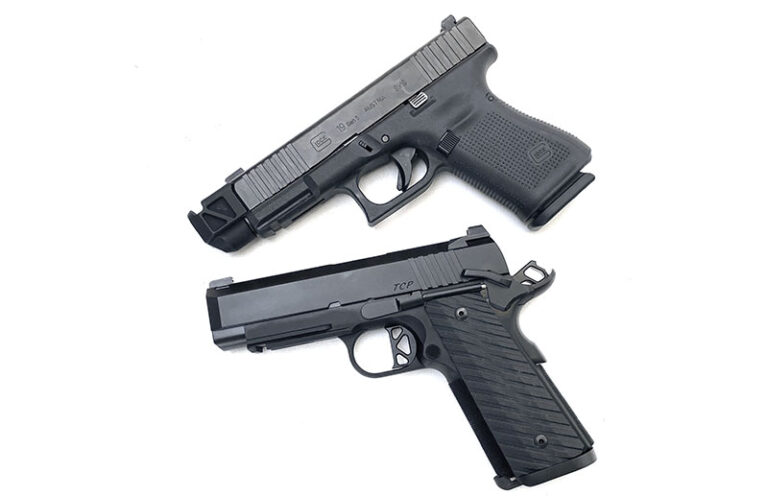
Guns were once exclusively made of metal and wood, then came plastic. Which should your handgun’s frame be made out of?
It’s safe to say that we aren’t in much danger of seeing companies like Ruger and Sig begin to introduce cap-and-ball pistols into the carry market (though one could only hope), but we’re seeing something many folks out there consider a regression: the return to metal-framed pistols.
Before we begin here, I need to be up front that I no longer own any polymer-framed pistols—nope, not even a Glock 19. I’ve carried polymer-framed pistols for nearly 13 years nonstop, but the recent trend back to metal frames has made me realize just what I was missing.
Before you turn your eyes from these pages, understand that I’m not besmirching polymer guns; rather, treat this as an alternative position that you should consider.

Barbie Dolls And Tall Tales
Before I get into how much I’ve come to appreciate metal frames on modern carry guns, I need to address the incredible uphill battle polymers have faced when talking guns in general. Plastic, polymer, synthetic—or really whatever you want to call the materials that assume the mantle of being anything but good ol’ wood and steel—have been universally disparaged for decades.
Students of history know that mankind has literally never stopped seeking a competitive edge against each other and large predators. Men have invested more into weapons than almost anything else, and no doubt there was some early man debating his brother and father about the possibility of using a different type of alder for his spear when trying to kill a sabertooth.
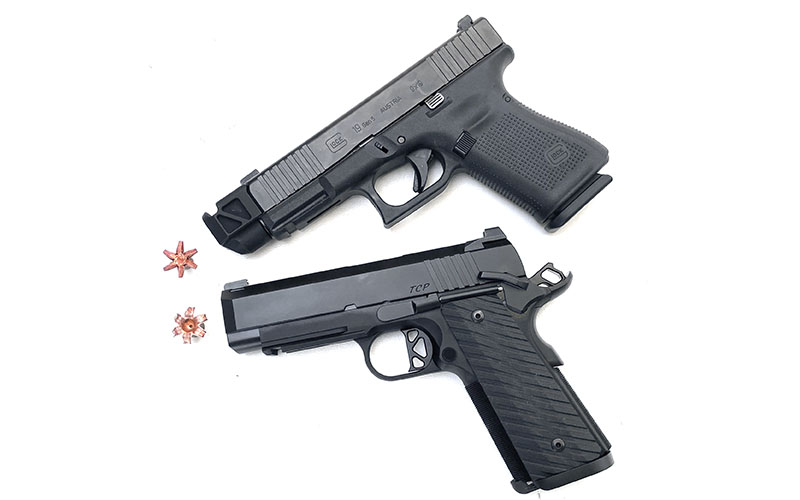
In Homer’s The Iliad, incredibly complicated weapons are described, including composite bows. If you travel to armory museums in Europe, you’ll be treated to examples of just how advanced weapons and armor were hundreds, and even thousands, of years ago. The point is that people have always been trying new ways to create arms and armor, so when plastic became common and affordable, why would it not be used in weapons?
Regression is a mindset, not a true theory of use. When conquering Central America, the Spanish still used steel armor, but it was padded fabric outfits that were enough to stop native atlatl bolts and stone-tipped arrows. European guns, bows and steel crossbows had long since made simple padded armor out of date, but it was great for the Spanish in this exact situation.
Was that a regression? No. It was an adaptation to the environment. The same goes for polymers in this context: Guns didn’t get “cheaper” with the addition of polymers; in fact, they became better in many ways, including applying benefits to metal-framed guns.
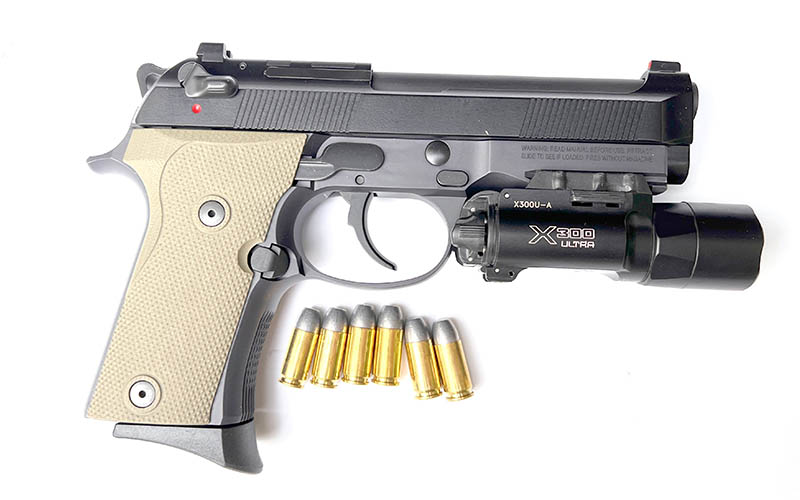
I think it’s safe to say that mass-issue introduction of polymers and polymer derivatives in the American military went … poorly. The M16 service rifle was considered space-age, needed no real cleaning and was so lethal that it could simply blow enemy soldiers to pieces. Early reports in Vietnam came back as overwhelmingly positive, with real reports saying that the enemy had literally been dismembered by the light, zippy rounds.
Whatever happened there is up for debate, but what followed certainly wasn’t: The M16’s introduction was a disaster, and it shook the frail faith of the entire country. The gun was primarily constructed of aluminum and had no wood furniture that had, up to that point, been an iconic standard. It was rumored that the gun was, in fact, made by Mattel (yes, Barbie).
This idea that somehow the materials were at fault (ignoring the at-fault engineers and bureaucrats) carried over into the modern age with the introduction of Glock pistols in the 1980s. Bear in mind that even the Colt Single Action Army had, at this point, been supplied with hard rubber or plastic grips for the better part of 100 years, and likewise plenty of foreign countries used non-traditional materials in their guns, such as Bakelite or laminated wood. Glock pistols were extremely confusing to many people at the time—despite them being something of a commonplace item today. Guns simply had to be made of steel. This notion that plastics could compete was silly to many … but they weren’t laughing for long.
The Rise Of Plastics And Modules
Glock pistols use a “plastic” frame that includes molded-in metal components and easily manufactured, simple internals. The main area where the Glock differed from legacy systems, such as the venerated 1911, was in its means of lockup and where the gun distributed pressure during cycling. A massively critical piece on the 1911 is, in fact, the slide stop. On the other hand, Glock pistols simply have a different way of working that removes most of the cycling pressure from the frame. This is oversimplified, but if you imagine it in the same way you imagine the AR rifle, it’ll make sense. The upper and lower can be made of most anything, including plastic, so long as the internal locking components are steel and able to bear pressure.

By removing the frame from the equation, the use of polymer became feasible. However, the jury remained out for decades, as gun writers, instructors and the general public came to either love or hate polymer-framed pistols. There was a nagging thought that these plastic guns just wouldn’t stand the test of time. Will they objectively last as long as a steel-framed pistol? Well, I really don’t know. Polymers do become brittle with age, and I’ve known a handful of individuals who used their Glock pistols regularly for decades and eventually had a frame crack. In all cases, Glock repaired the guns. Will we see 100-year-old Glocks on the market in the 2080s?
So now we’ve moved into what amounts to a “third” generation of pistol design: the firing control components that interact with the slide are separated from the frame itself, as is done with the Sig P365, P320 and many other new guns that have adopted this model of construction. While many companies have what could be called a “chassis” pistol, Sig was the leader in promoting the concept.
The P365 and P320 are very popular guns across the world, and we’re seeing a wide range of aftermarket support arise. The “firearm,” as defined by the ATF in this case, is the serialized internal chassis that the remaining parts are attached to. In the case of Glock pistols, the plastic frame itself is the serialized part, making for white-knuckle customization if you decide to modify the plastic. On guns like the P365 and P320, the polymer grip module is cheap and easily replaced.
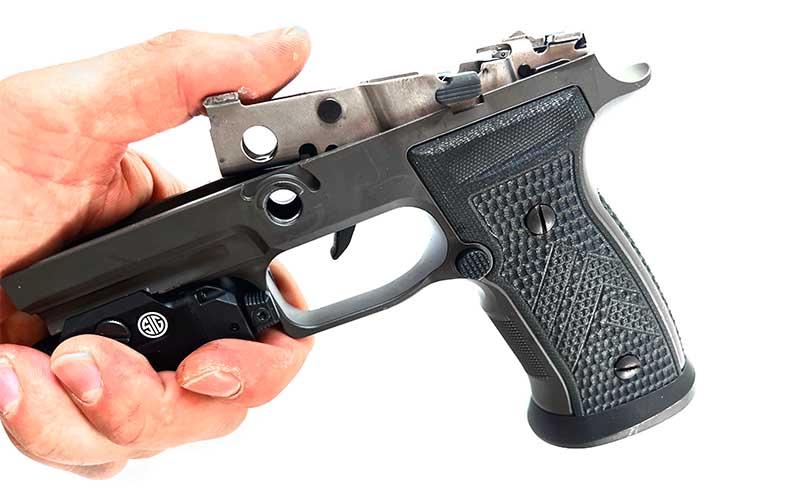
The modularity of modern pistols, especially the Sig models, has encouraged people to build up guns that suit them individually, not simply what the manufacture decides you need. Well, it didn’t take long for entrepreneurs to start making metal grip modules. Remarkably, people initially saw this as a regression: “Hey, I thought we were doing plastic, but now we’re back to metal? Won’t it be heavier and stuff? Why put a metal frame on a P320 when you already make a P226?”
The Sig team has made what I believe to be the best choice of all: They supported the aftermarket. Many companies don’t like it when you start changing out factory parts, but what Sig has done is fully encourage this type of behavior … so far as to include third-party accessories in their custom shop options. Metal grip modules for the P365 and P320 are now widely available, including on factory guns as featured in this article.
If you think about it, the “return” to metal frames/grips on what originally began as polymer-framed guns is no real surprise. But, in adding more rigid frames to these otherwise plastic guns, we find that we now have all the benefits of all worlds in one place. The internal-chassis, modular pistol came out of a need to innovate in that polymer world. We needed plastics in that case to create that system. Once that system was established, putting a metal shell on it was a logical next step, in that the flexibility of a chassis system now allows the shooter to add weight in desired places and adapt the gun for greater rigidity and fit.
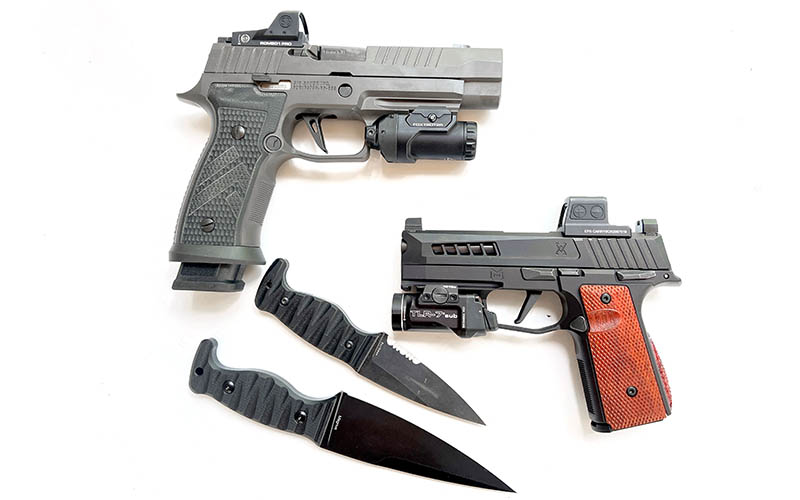
In addition, accuracy is, at least in my hands, dramatically increased in metal-grip chassis pistols. My groups shrank noticeably when I swapped my Sig OEM plastic grip modules for metal versions made by Mischief Machine.
Metal is, of course, heavier than polymer. A great benefit to using a polymer-framed pistol is weight savings. However, for people like me, I prefer the added weight in the lower portion of the gun, and a firmer material to hold onto during strings of fire. Either way, things can happen to all guns, regardless of their construction: Just because it’s plastic doesn’t mean it won’t last you a long time. And, likewise, just because it’s metal doesn’t mean it won’t have issues.
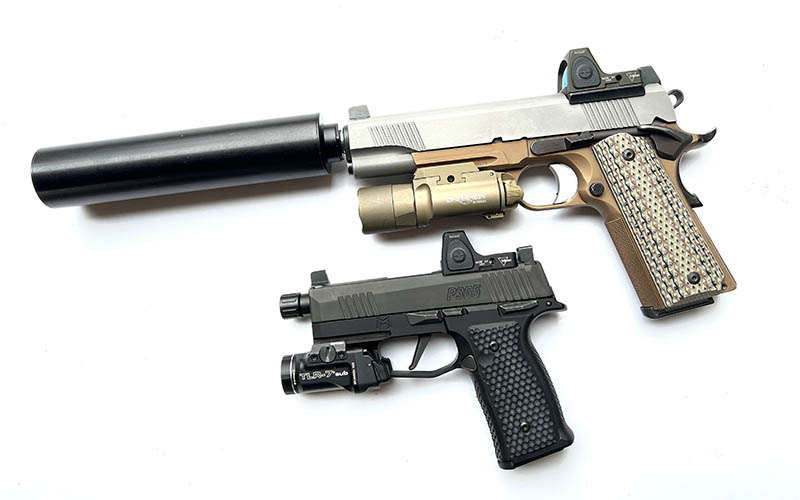
Notes On Modular Accessories
As mentioned, I’m a big fan of the Mischief Machine product line. I’m a big believer in these products and carry them daily. What I love most is that they allow me, a person with large hands, to be able to reliably train with and use small pistols. Tiny guns are very difficult for a person like me to become proficient with, and the stock P365 was a pain to shoot, despite the benefits of accuracy and reliability. The little gun would torque in my mitts as I fired, and I wanted to change this.
The Mischief Machine products are a bit thicker and feature interchangeable grip panels that you can use to customize your gun. My friends still give me the side-eye when they see me with my wood-gripped, optically equipped pocket pistol. It’s a clash of sorts, but man does it fit me so well. The ability to have a tiny gun with full-size accuracy and features is awesome; it makes a small gun feel bigger in the hands … but not in terms of how it carries.
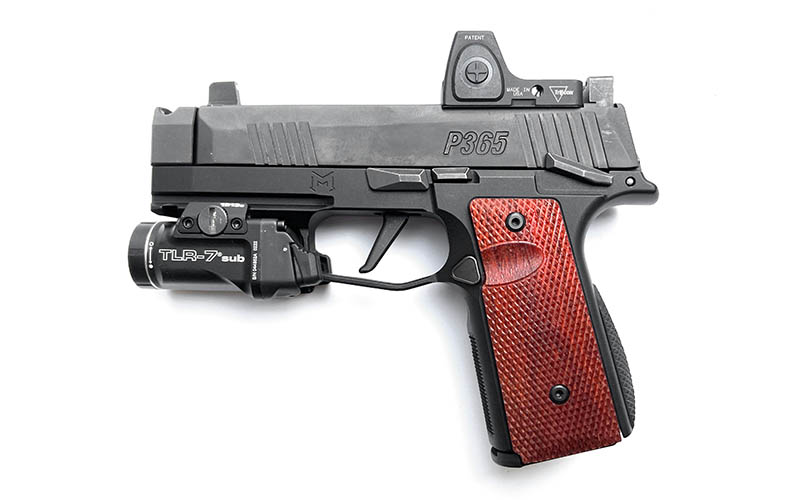
Another benefit of metal frames is being able to rigidly mount accessories. I always prefer to have a light on my daily use guns, and it irritated me to have to deal with mounting aluminum flashlights on plastic rails. I like being able to solidly mount lights on pistols without having them be some kind of liability. This is a personal complaint; many people are fine with plastic rails, but I always prefer a metal-to-metal interface.
Editor's Note: This article originally appeared in the 2023 EDC Special issue of Gun Digest the Magazine.
More Polymer Guns:
- The Springfield Hellcat
- The SIG P365
- The Ruger MAX-9
- The Taurus GX4
- The Smith And Wesson M&P Shield Plus

Next Step: Get your FREE Printable Target Pack
Enhance your shooting precision with our 62 MOA Targets, perfect for rifles and handguns. Crafted in collaboration with Storm Tactical for accuracy and versatility.
Subscribe to the Gun Digest email newsletter and get your downloadable target pack sent straight to your inbox. Stay updated with the latest firearms info in the industry.

![Best Concealed Carry Guns In 2025 [Field Tested] Wilson Combat EDC X9S 1](https://gundigest.com/wp-content/uploads/Wilson-Combat-EDC-X9S-1-324x160.jpg)


![Best 9mm Carbine: Affordable PCCs [Tested] Ruger Carbine Shooting](https://gundigest.com/wp-content/uploads/Ruger-Carbine-Shooting-100x70.jpg)
![Best AR-15: Top Options Available Today [Field Tested] Harrington and Richardson PSA XM177E2 feature](https://gundigest.com/wp-content/uploads/Harrington-and-Richardson-PSA-XM177E2-feature-100x70.jpg)
